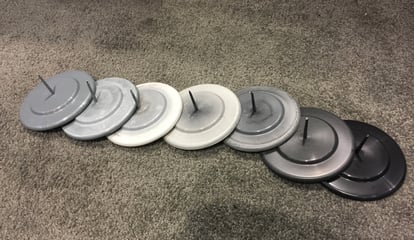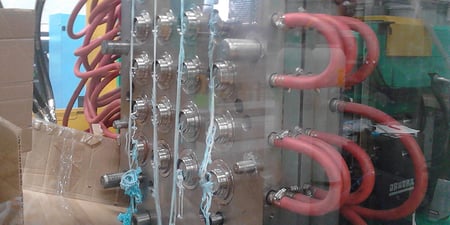
In plastic injection molding, unexpected issues with molds and hot runner systems can significantly impact production efficiency. A common challenge is dealing with contamination and material buildup that cannot be immediately fixed due to high production demands. This blog explores a real-world case where a chemical purging compound was used as a contingency to maintain production and minimize downtime.
The Problem: Hot Runner Contamination
During production, a molder encountered a persistent issue with one of their hot runner systems. During a manual cleaning, it was discovered that a misaligned drill hole had created a bulge inside one of the walls. This defect led to a section with no radius where material would accumulate in a minor groove at the bottom, resulting in frequent contamination and difficulty during purging. However, with production running at full capacity, there was no immediate opportunity to repair the hot runner system.
The Solution: Implementing a Chemical Purge
To continue operations without excessive scrap and downtime, the team opted to use a chemical purging compound as a temporary measure. The chemical purge effectively cleaned the hot runner, enabling the molder to maintain acceptable production levels during color changes and regular runs, all while keeping scrap rates low. This solution allowed the team to keep production on track until a repair window opened.
Post-Repair Strategy: Returning to Standard Practices
Once the hot runner system was repaired, the molder was able to resume regular operations. They returned to their standard practices, using a mechanical purge for preventive maintenance and more significant color changes. This approach ensured the mold was kept in optimal condition, further reducing downtime and improving overall efficiency.
Key Takeaways: Continuous Monitoring and Root Cause Analysis
This case highlights the importance of inspecting molds and machines when abnormalities occur during production—not just at the start of a run but throughout the entire process. Continuous monitoring helps identify underlying issues early on, allowing for timely interventions that prevent more significant problems down the line. Implementing a systematic approach to find and eliminate root causes is essential for maintaining a robust continuous improvement program.
Conclusion
Using chemical purging compounds as a contingency measure can be a valuable strategy to maintain production and minimize waste when immediate repairs are not feasible. Regular inspections, understanding the root cause of issues, and choosing the right purging compounds for the job can significantly enhance production efficiency. Feel free to reach out for more guidance on selecting the right purging compounds and best practices for your operation







Comments